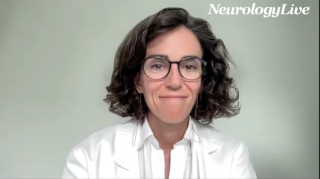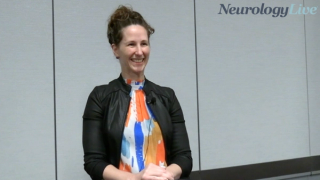
Headache and Migraine
Latest News

Video Series

Latest Videos
Shorts
Podcasts
CME Content
More News

Take 5 minutes to catch up on NeurologyLive®'s highlights from the week ending September 19, 2025.

ShiraTronics reveals promising 12-month results from its neuromodulation device, showing significant migraine relief and improved quality of life for chronic migraine patients.

Here's some of what is coming soon to NeurologyLive® this week.

Take 5 minutes to catch up on NeurologyLive®'s highlights from the week ending September 12, 2025.

Tamara Kaplan, MD, vice chair of education for the department of neurology at Mass General Brigham, shares insights on evolving neurology education, highlighting her framework for supporting clinician educators and the growing recognition of education as a career path.

The vice chair of neurology at West Virginia University reflected on receiving the AUPN Leadership Award, addressing challenges in academic neurology and the evolving responsibilities of vice chairs in advancing departmental goals.

A new qualitative study of 20 patients with migraine explored and documented the prodrome phase, revealing some of their common symptoms and timing before headache onset.

Take 5 minutes to catch up on NeurologyLive®'s highlights from the week ending September 5, 2025.

Amaal Starling, MD, FAHS, FAAN, associate professor of neurology at Mayo Clinic College of Medicine, shared data recently presented at AHS 2025 showing that eptinezumab extended the time between migraine attacks.

Take 5 minutes to catch up on NeurologyLive®'s highlights from the week ending August 29, 2025.

Merz initiates phase 3 trials for Xeomin, targeting migraine prevention in adults, aiming to fill gaps in current treatment options.

In a recent study, investigators developed multireceptor antagonist peptides that could block CGRP and PACAP, providing proof-of-concept for a potential new approach to targeting pathways involved in migraine.

The head of the neurology department at Vall d’Hebron University Hospital provided clinical thoughts on fremanezumab’s expanded approval in pediatric migraine, the phase 3 SPACE study, and where future treatment may hold.

The director of the Brotman Facial Pain Clinic at the University of Maryland talked about emerging preclinical evidence supporting adenosine A3 receptor activation for post-traumatic trigeminal neuropathic pain. [WATCH TIME: 5 minutes]

At AHS 2025, Elizabeth Seng, PhD, professor of neurology at Albert Einstein College of Medicine, presented findings from a study showing that migraine was associated with increased odds of ischemic stroke in veterans.

A recent study reassured that triptans may be safe for migraine treatment, emphasizing the need for individualized assessments of cardiovascular risks.

The associate professor of neurology at Johns Hopkins Medicine previewed a 2025 AUPN panel exploring AI’s clinical, research, and educational applications, along with the ethical considerations shaping its responsible adoption. [WATCH TIME: 2 minutes]

The corporate vice president of medical information and research at Theranica discussed long-term findings presented at AHS 2025 covering the company’s Nerivio remote electrical neuromodulation device for patients with migraine. [WATCH TIME: 5 minutes]

Daniel Freedman, PhD, of MIT, gave clinical commentary on how Openwater’s Open-LIFU enables new research into conscious perception and potential clinical applications for conditions like pain and depression.

Teva's fremanezumab gains FDA approval for pediatric migraine prevention, offering a vital treatment option for children aged 6-17.

Take 5 minutes to catch up on NeurologyLive®'s highlights from the week ending August 1, 2025.

Take 5 minutes to catch up on NeurologyLive®'s highlights from the week ending July 25, 2025.

The postdoctoral neuropsychology fellow at North Shore University Hospital talked about recognizing and aligning subjective cognitive complaints with objective assessments in patients with migraine during the interictal period. [WATCH TIME: 6 minutes]

The associate professor of neurology at Mayo Clinic Rochester talked about using artificial intelligence-electrocardiogram at baseline to predict adverse vascular events in patients with migraine. [WATCH TIME: 5 minutes]

The associate professor of neurology at Johns Hopkins detailed how artificial intelligence is shaping the future of neurology through its integration in clinical care, research, and medical education. [WATCH TIME: 4 minutes]


























































